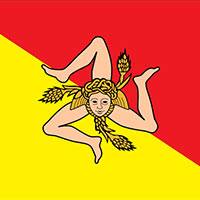Agrigento
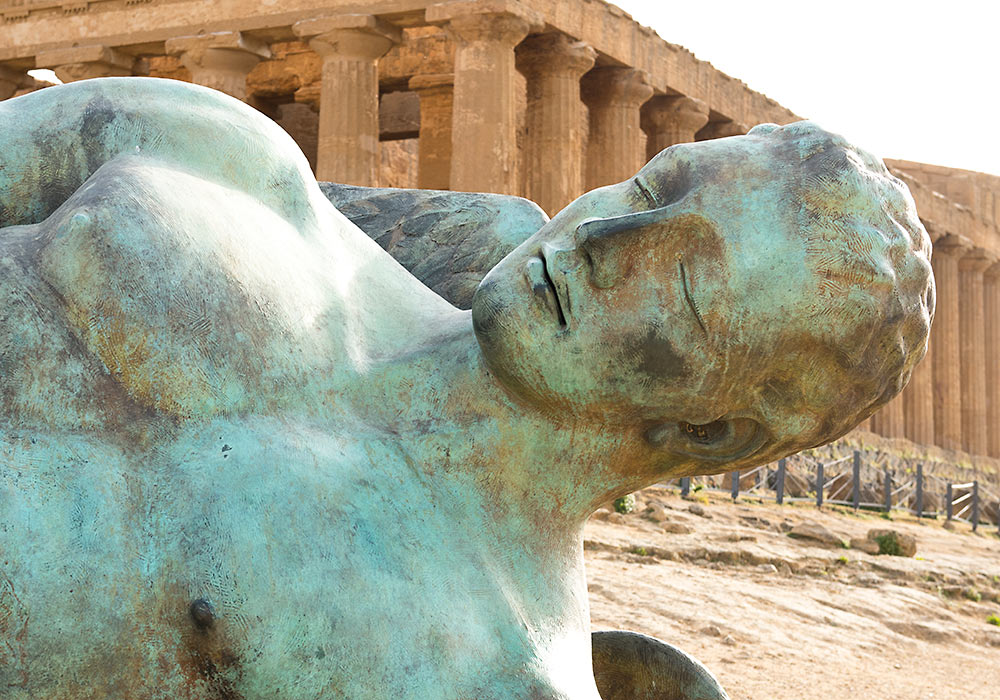
The beautiful bronze statue depicting the fallen Icarus.
Agrigento - Italian Capital of Culture in 2025
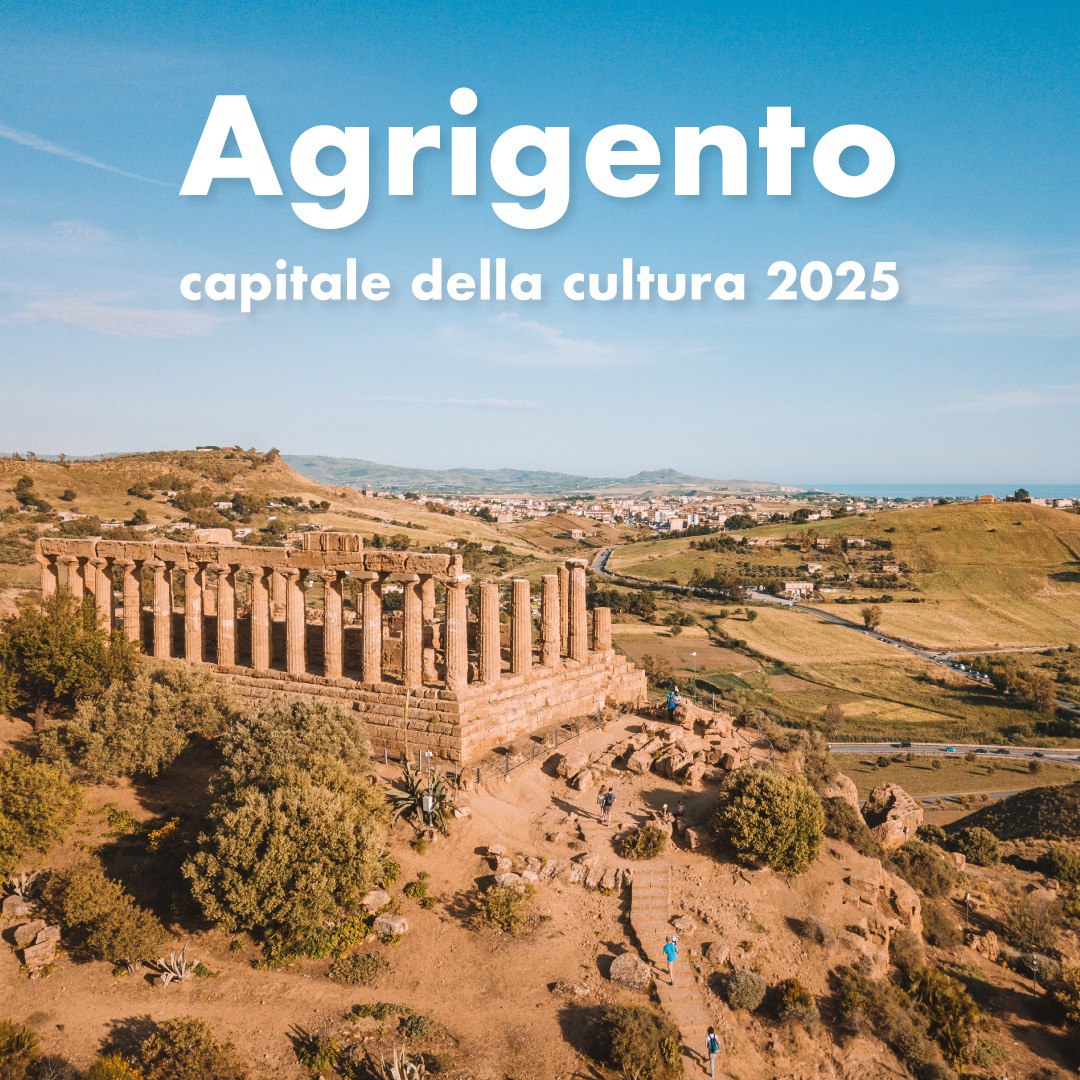
Agrigento is an ancient city on the south coast of Sicily, 2 km. from the sea. It was founded (perhaps on the site of an early Sicanian settlement) by colonists from Gela about 580 B.C. The buildings for which it is famous all belong to the first two centuries of its existence.
Phalaris, who is said to have roasted his enemies to death in a brazen bull (Pindar, Pyth. i. 184), ruled as tyrant from 570 to 554. What form of government was established after his fall is uncertain; we know only that, after a long interval, Theron ruled as tyrant between 488 and 473.
In 472 a democracy was established. In the struggle between Syracuse and Athens (415-413) the city remained absolutely neutral. Its prosperity continued to increase (its population is given at over 200,000) until in 406 B.C., despite the help of the Siceliot cities, it was captured and plundered by the Carthaginians, a blow from which it never entirely recovered.
Agrigento was colonized by Timoleon in 340 B.C. with settlers from Velia in Lucania, and in the time of the tyrant Phintias (289-279) it had regained some of its power. In the First Punic War, however, it was sacked by the Romans (261), then by the Carthaginians (255), and finally in the Second Punic War by the Romans (210).
The Arabs took the city in 828, improving the economy by cultivating cotton, sugar-canes and mulberries for the silk industry, but in 1087 the Normans took the city after a siege of 116 days, depriving the inhabitants of food.
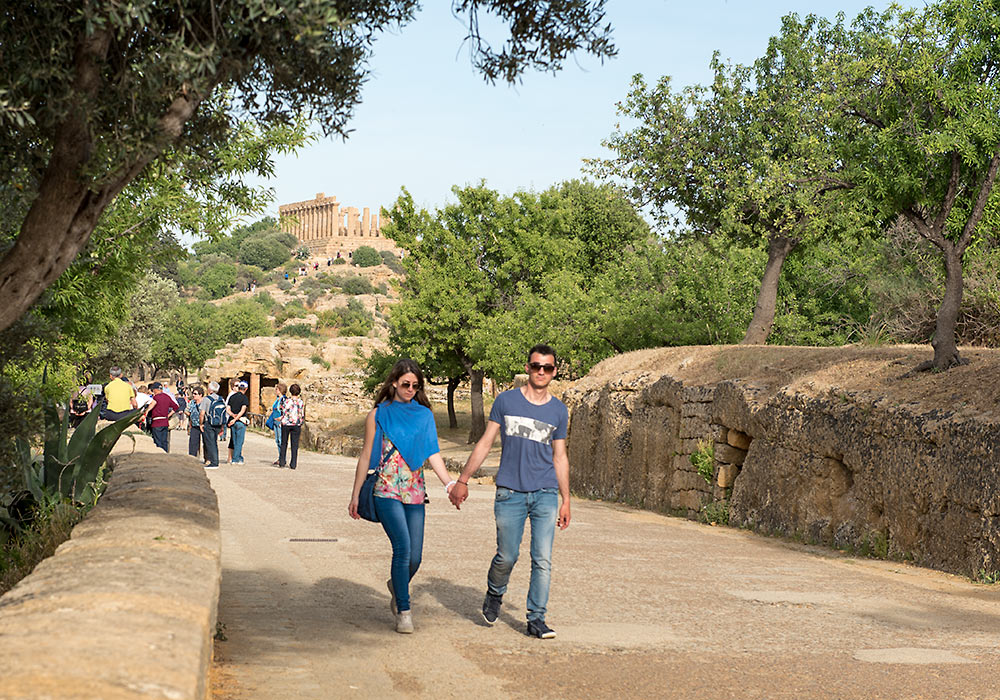
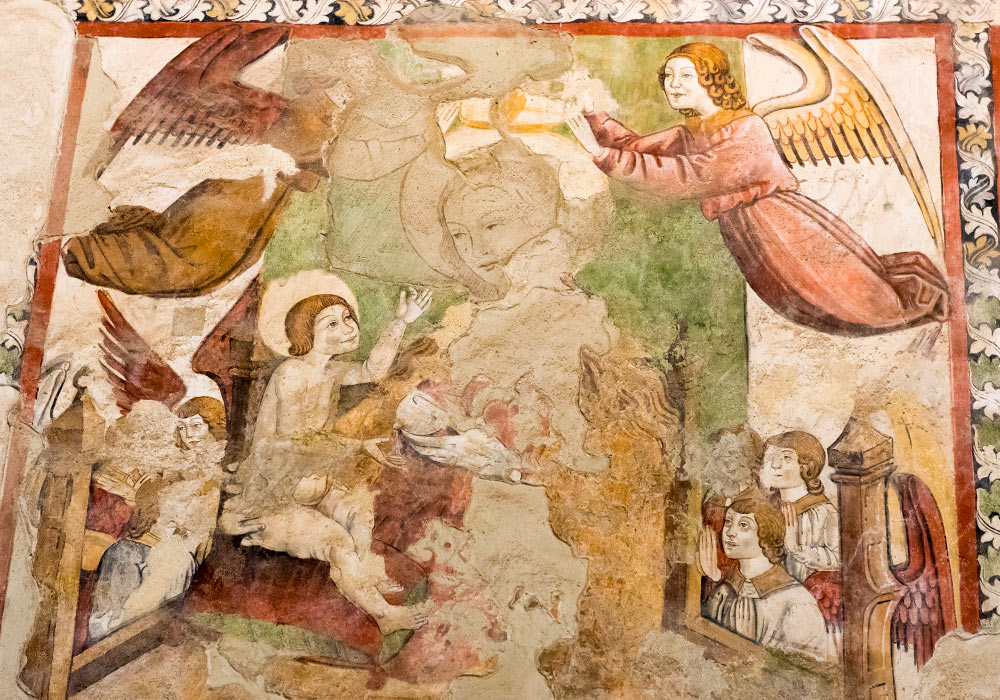
Depiction of the Madonna nursing Jesus. 14th century frescoe in the church Santa Maria dei Greci, which is built with antique materials on the site of a Doric temple (Agrigento city). A similar painting can be seen in Chiesa Santa Maria della Catena (Church of Saint Mary of the Chain) in Palermo
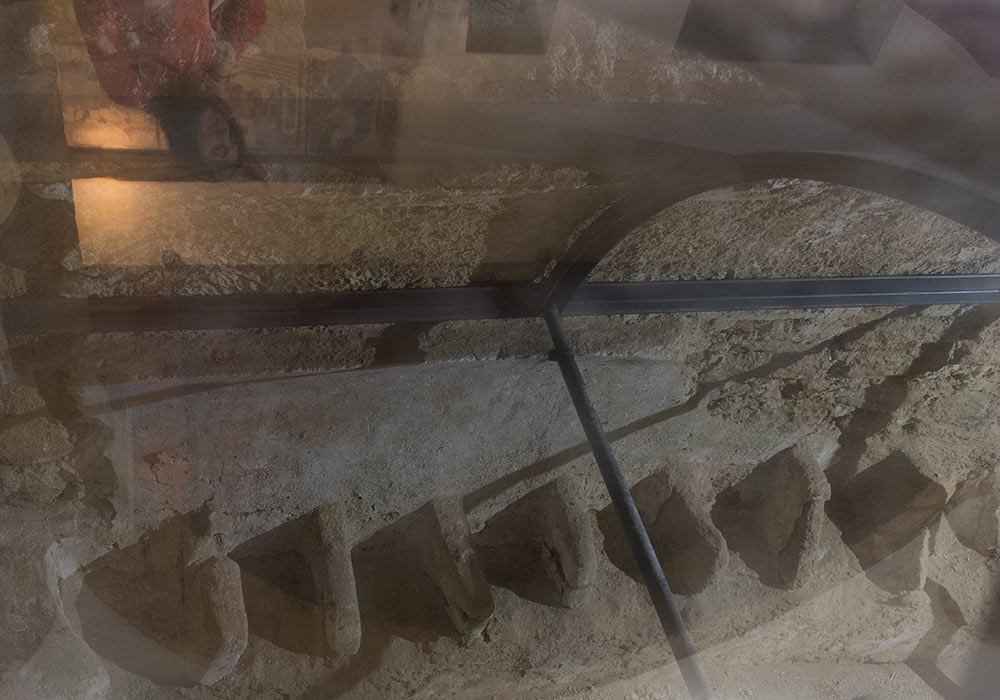
Through the floor in the church Santa Maria dei Greci, Agrigento, you can see a 15th century Capuchin crypt used for mummification (the bodies were placed upright in the seats, and the fluids drained into the hole in the centre of the room).
Photo: Per-Erik Skramstad / Wonders of Sicily
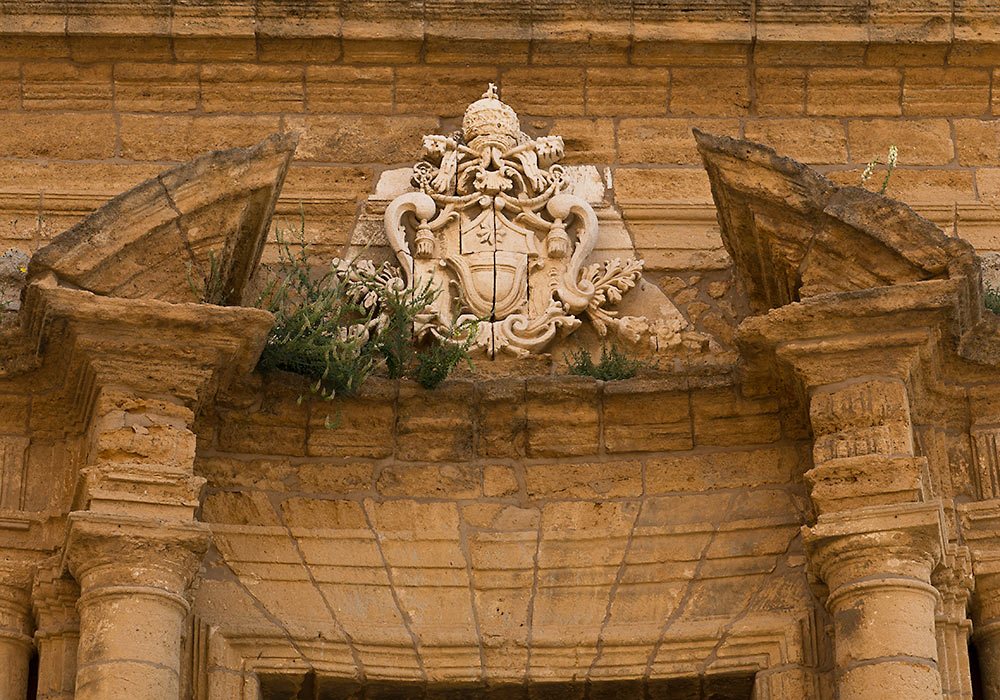
The church of S. Pietro (18th century). Part of the portal.
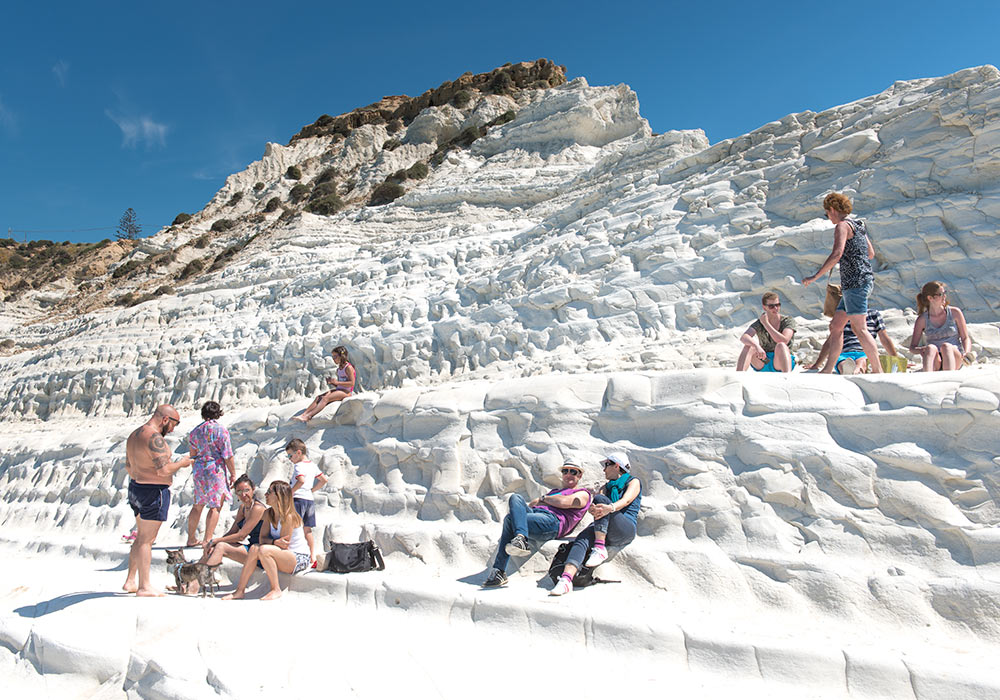
The world famous cliff in Realmonte (near Agrigento) called "Scala dei turchi" (Stair of the Turks). The cliff was used in Giuseppe Tornatore's film Malèna, in the scene where the boys are measuring the size of their penises. More film locations in Sicily here...
See more photos of Scala dei turchi here!
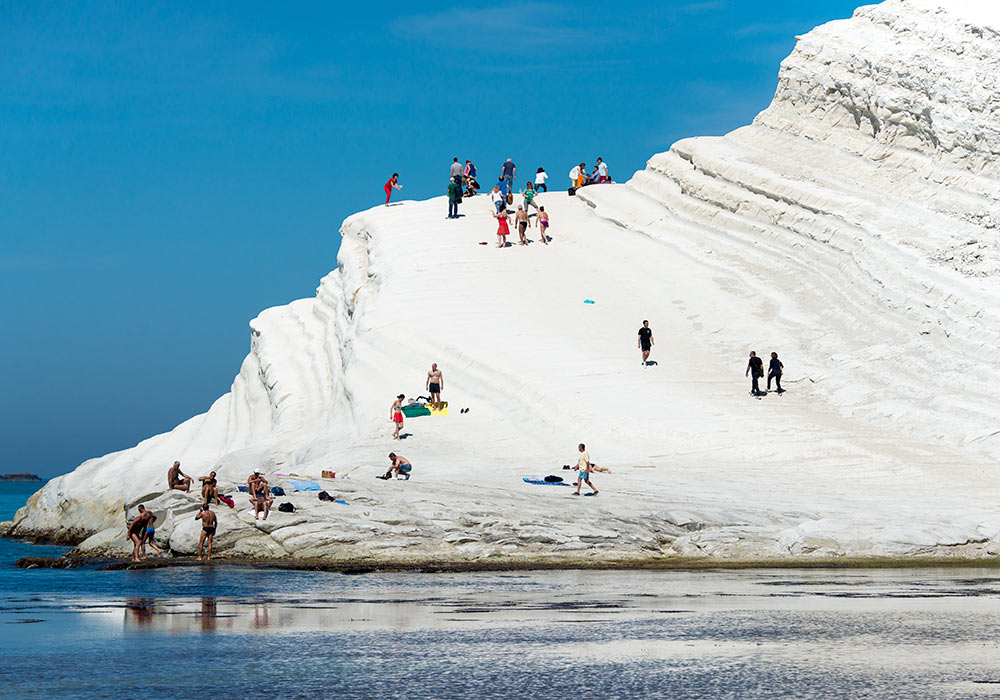
Scala dei turchi (Stair of the Turks) is a popular place to visit, both for tourists and Sicilians. This photo was taken early in the morning, before all the visitors had arrived.
Photo: Per-Erik Skramstad / Wonders of Sicily
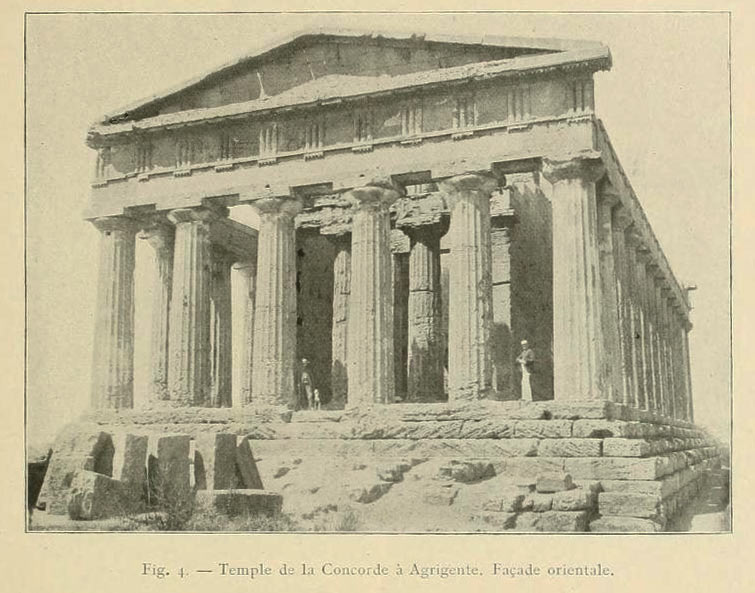
Temple of Concord in the Valley of Temples, Agrigento. Photo must have been taken before 1907.
Photo: Per-Erik Skramstad / Wonders of Sicily
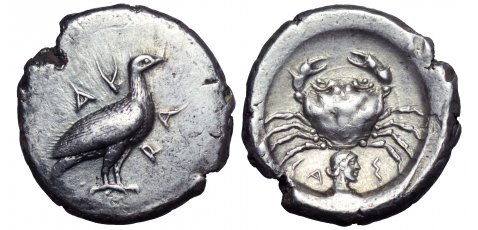
Coin from Agrigento (Akragas), circa 480-470 BC.
Description: Sicily, Akragas AR Didrachm. Circa 480-470 BC. Eagle with folded wings standing right, AKRA around / Crab, male head below, flanked by CΑ-Σ, all within shallow circular incuse. Jenkins group III-pl. 37, 18; SNG ANS-959. 8.37g, 21mm, 6h. Extremely Fine.
Source: Roma Numismatics Ltd (with permission)
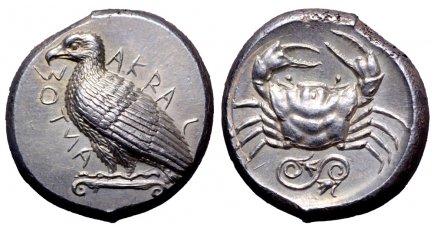
Coin from Agrigento (Akragas), circa 460-446 BC.
Description: Sicily, Akragas AR Tetradrachm. Circa 460-446 BC. Sea eagle standing left on Ionic capital, AKRACANTOΣ around / Crab; spiralled tendril ornament with floral terminals below; all within shallow incuse circle. SNG ANS 982 var; Lee Group II; cf. SNG Lockett 695 for same obverse die, 696 for reverse type but different die. 17.54g, 25mm, 6h. Fleur De Coin.
From the James Howard Collection. Published in Roma Numismatics VII was the first of the Howard collection's two truly spectacular Akragas tetradrachms (lot 85), which bore an inverted dolphin as the reverse adjunct symbol. A comparison between these two exemplars of Akragantine coinage is extremely difficult, for both are of a quality that collectors have seldom, if ever, been offered the chance to acquire. Although this coin's reverse symbol may be considered somewhat less exotic than that of its abovementioned brother, the eagle's head is undeniably more detailed, and its plumage sharper - indicative of an overall slightly greater state of preservation. Indeed, the freshness of the metal and the lightly toned, satin finish are quite remarkable; this coin should certainly be considered to be amongst the very finest of its type.
Source: Roma Numismatics Ltd (with permission)
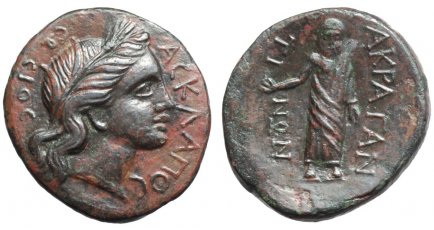
Coin from Agrigento (Akragas), Roman rule, after 210 BC.
Description: Sicily, Akragas Æ20. Roman rule, after 210 BC. Laureate head of Persephone right; ACKΛAΠOC to right, CΩCIOC to left / Asklepios standing facing, head left, holding patera in right hand; AKPAΓAN to right, TINΩN to left. SNG Copenhagen 123; SNG München 205; SNG ANS 1143; CNS I, p. 225, 144. 4.80g, 20mm, 6h.
Source: Roma Numismatics Ltd (with permission)
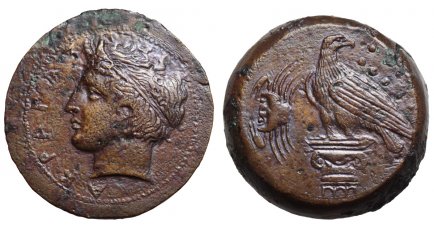
Coin from Agrigento (Akragas), circa 400-380 BC.
Description: Sicily, Akragas Æ Hemilitron. Circa 400-380 BC. Diademed head of river-god left, ΑΚΡΑΓΑΣ before / Eagle standing left on Ionic column, head right; crab to left, six pellets (mark of value) to right. CNS 89; SNG ANS 1097-1101. 18.50g, 26mm, 8h.
Near Extremely Fine.
Source: Roma Numismatics Ltd (with permission)
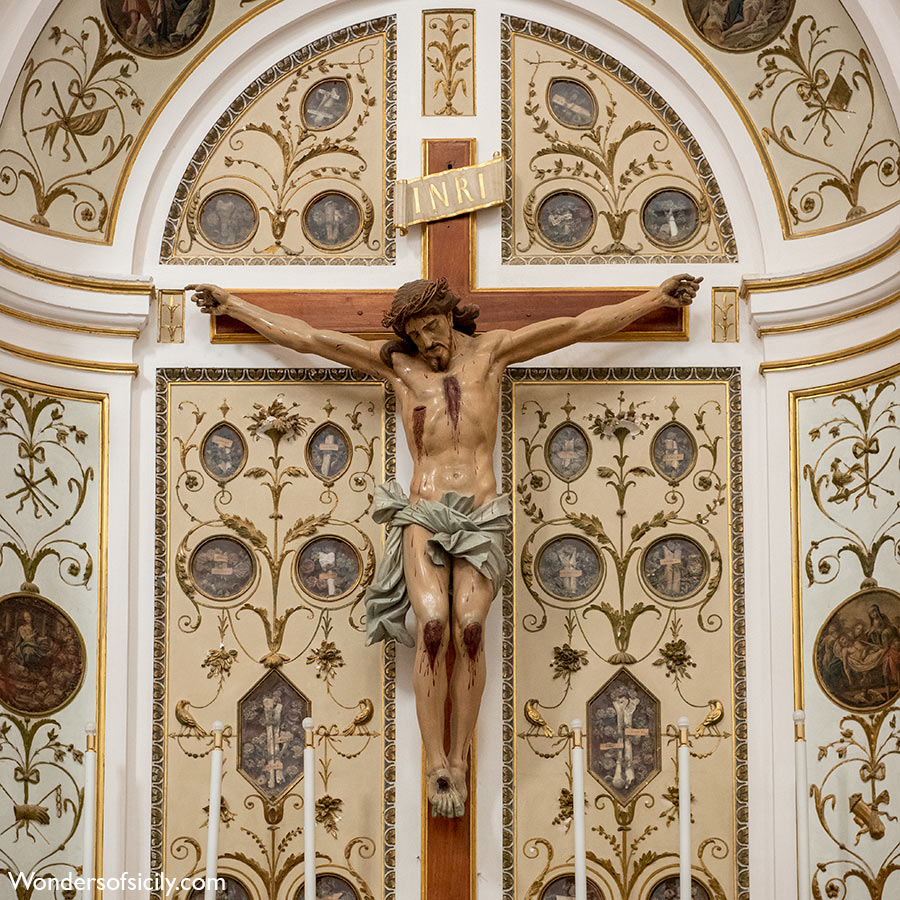
Crucifix with relics in Basilica dell'Immacolata (Chiesa di San Francesco), Agrigento.
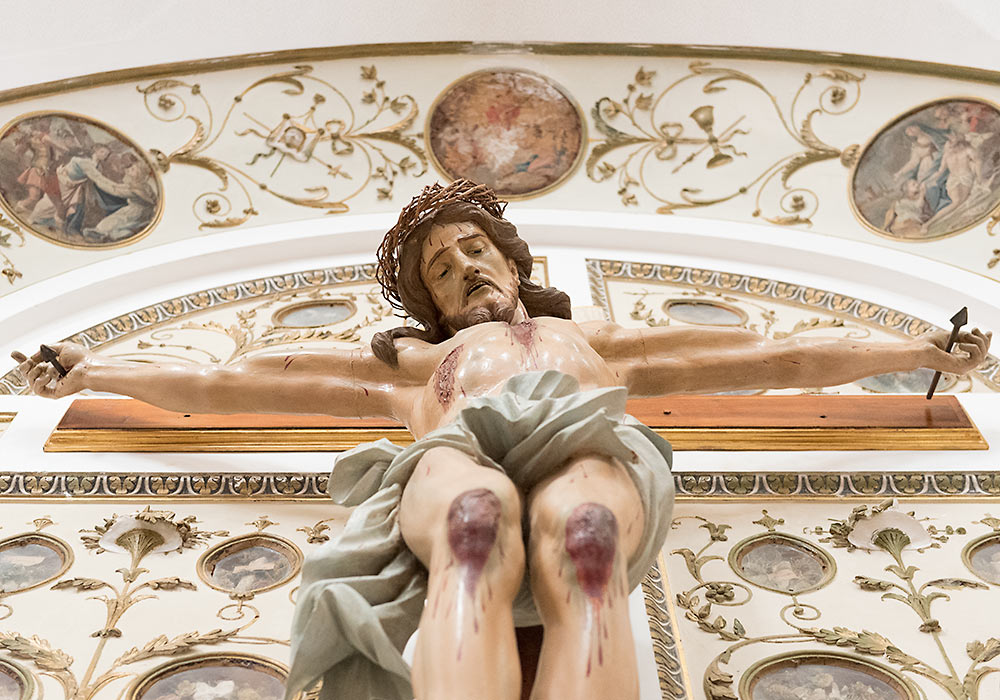
Crucifix in Basilica dell'Immacolata from another angle.
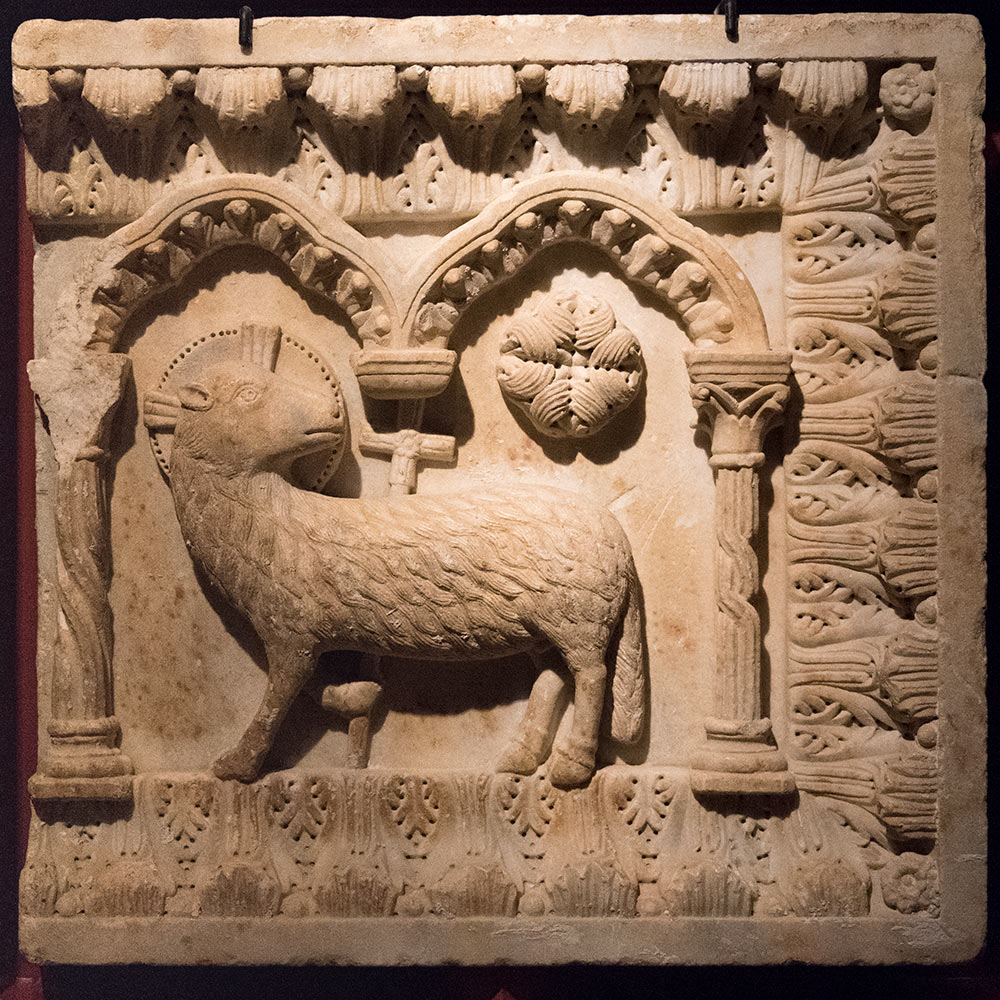
The Mystic Lamb (agnello mistico). Marble, 12th century.
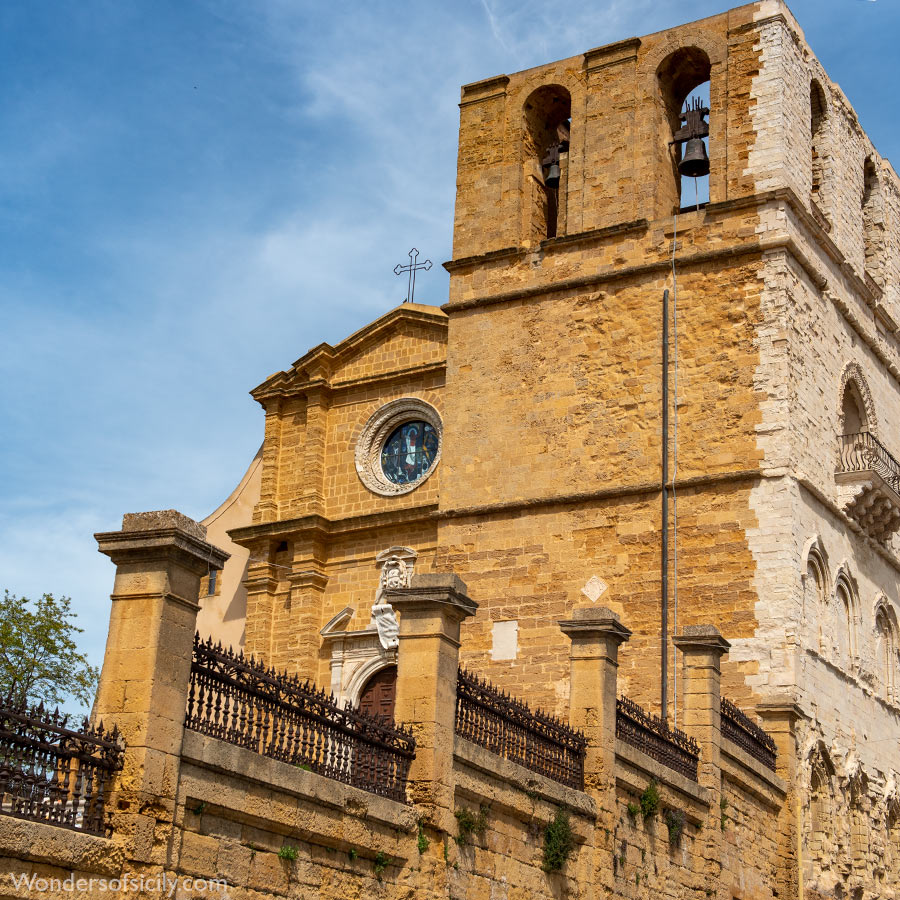
Agrigento Cathedral (Cattedrale di San Gerlando, C11-C13).
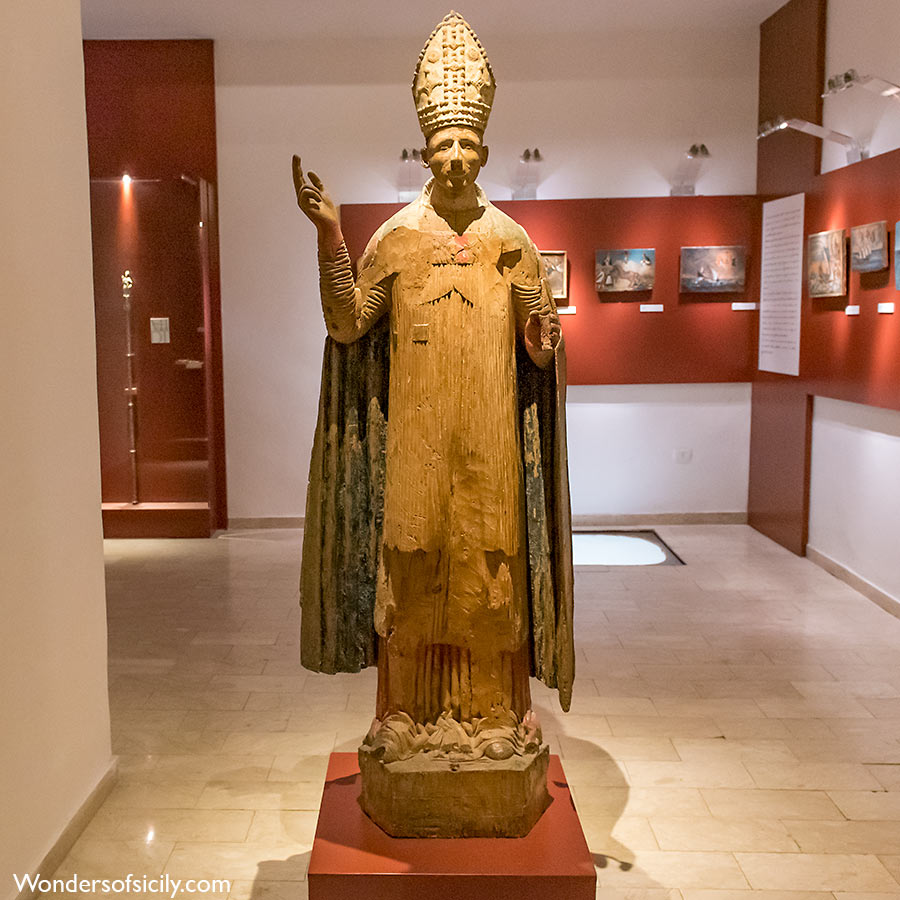
C14 wooden sculpture from Chiesa di Santa Croce of Saint Gerland of Agrigento (Italian: San Gerlando di Agrigento), also known as Gerland of Besançon (d. 25 February 1100), bishop of Agrigento.
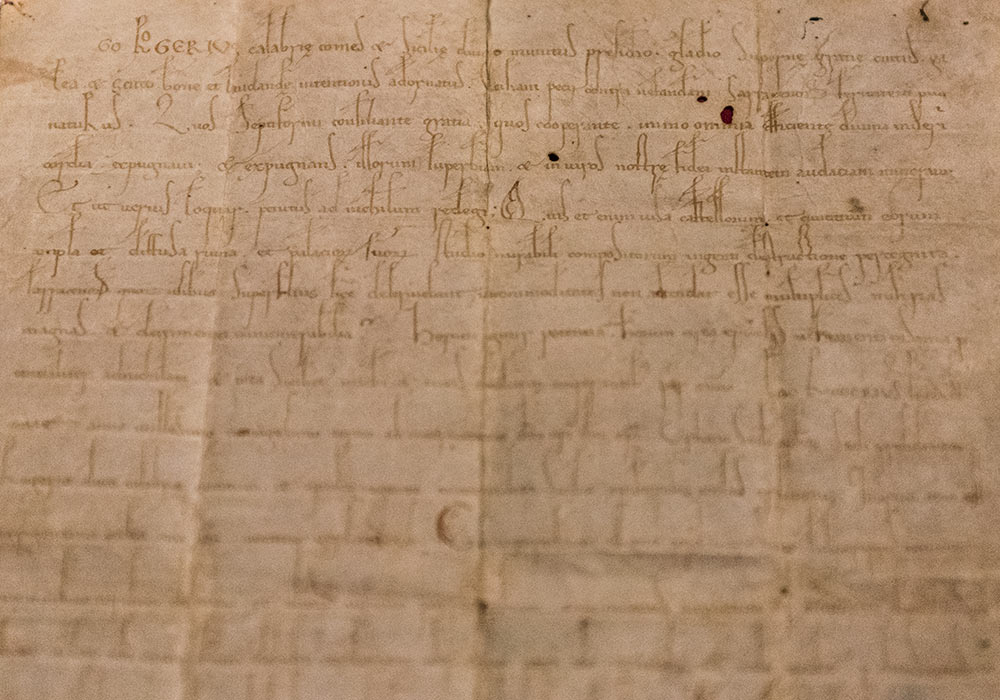
Diploma (c. 1093) by Roger I dedicating the cathedral in Agrigento to the Norman Saint Gerland, the first bishop of Agrigento "Ego Rogerius calabrie come set Sicilie …"
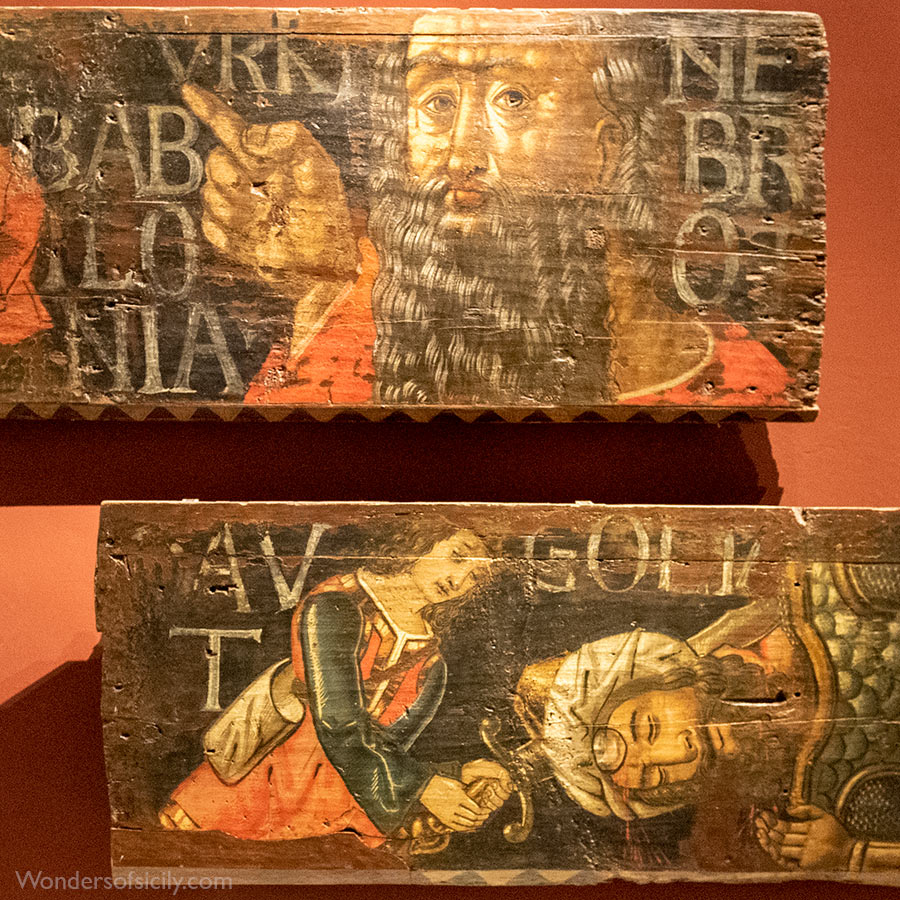
Parts of the wooden ceiling (1511-1514) in Agrigento cathedral. Now in MUseo DIocesano Agrigento.
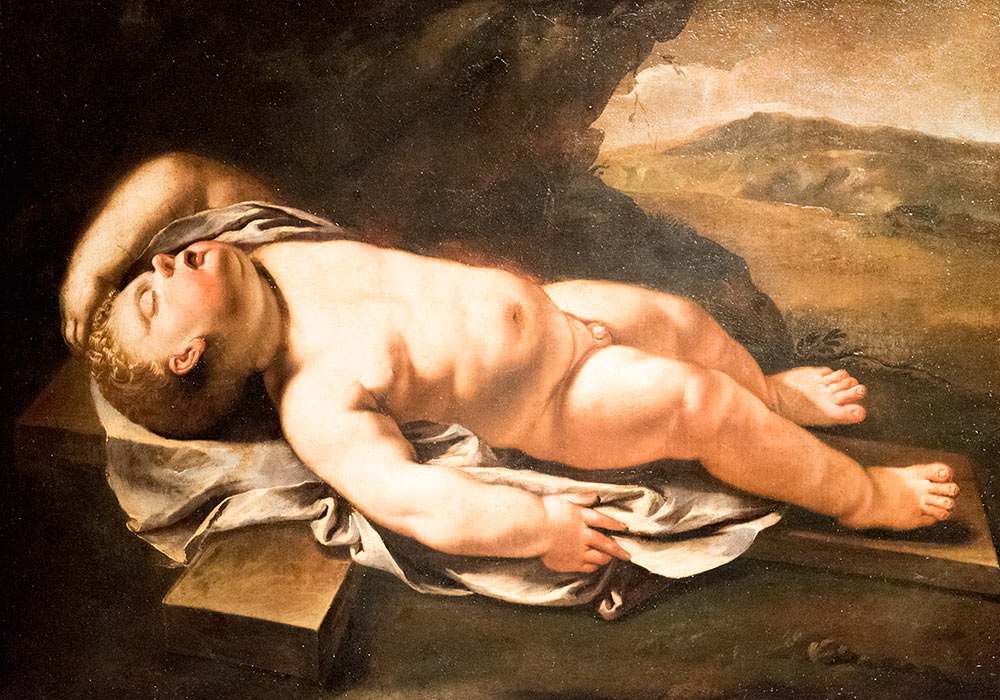
Child Jesus sleeping on the cross. Very interesting nose! (18th century)
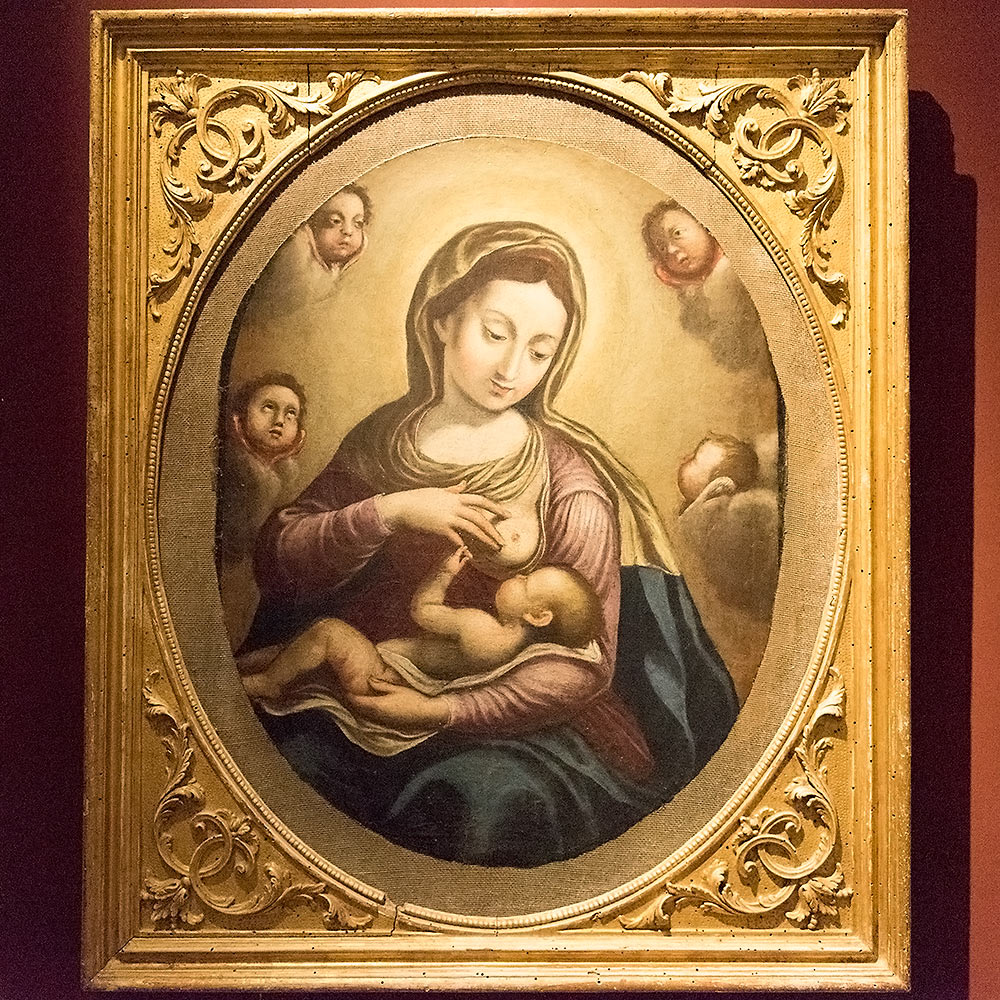
Madonna del latte. 18th century
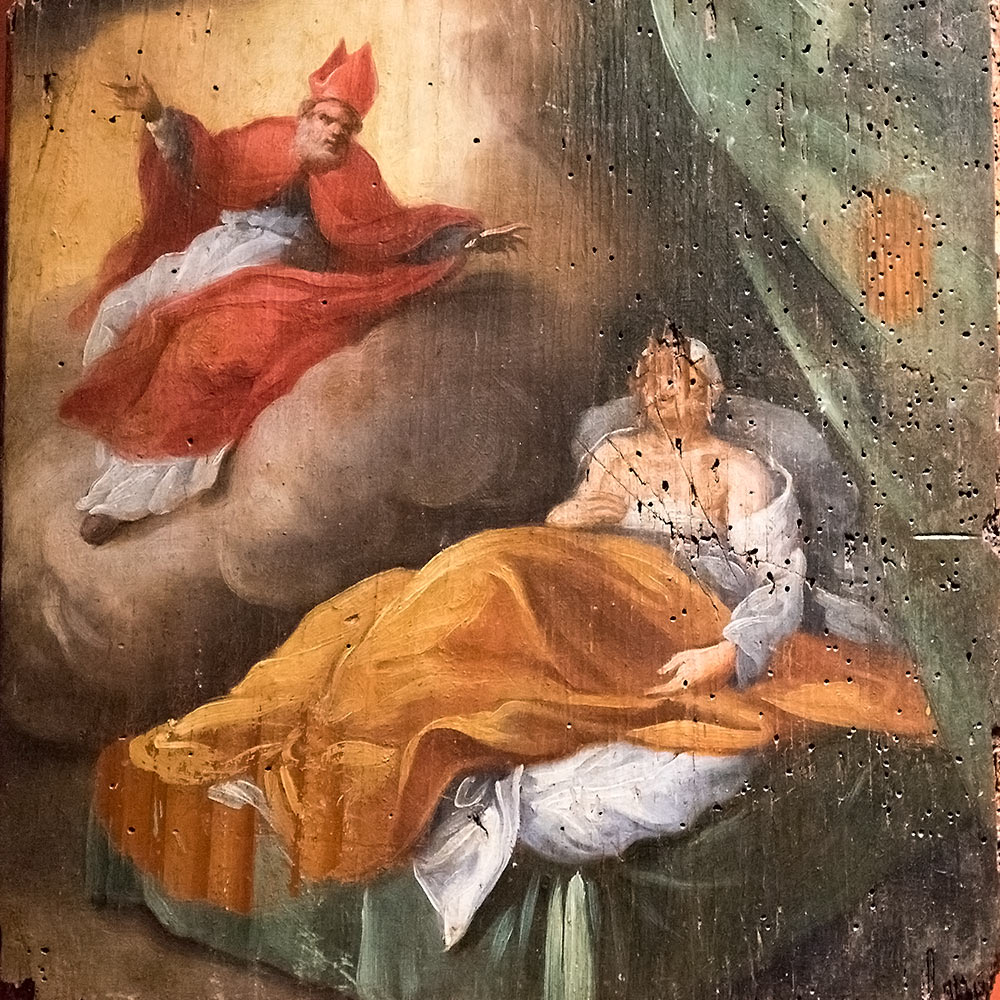
Sick man in bed. Note how the face has been "censored". I wonder who did this...
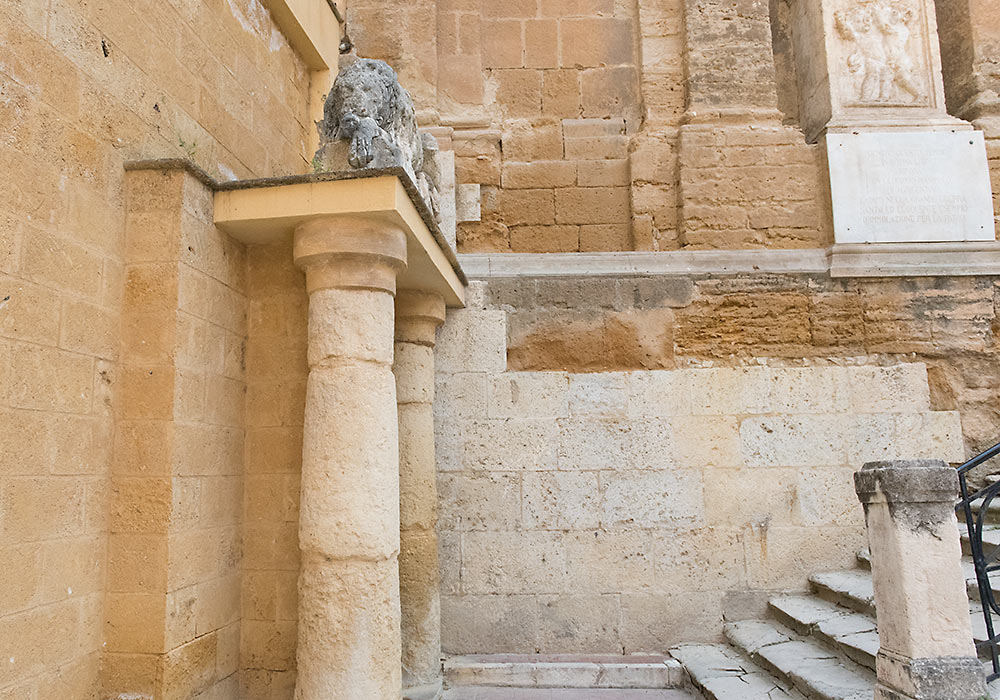
The lion to the left of the church of the Purgatorio sleeps above the locked entrance to a huge labyrinth of underground water-channels and reservoirs, built by the Greek architect Phaiax in the 5th century BC.
"Stability problems in Agrigento arise from both geological conditions and human actions. Agrigento still survives, although the natural erosion of the land has resulted in an incessant erosion of the cultural and historical heritage. Some intervention slowly taking place regarding the problem of the underground passages, such as the Purgatorio. [...] Similarly the visible deforestation and eventual destruction of the soil began in the sixteenth century when the area's population doubled. Growth pressure impelled the people to cut trees to expand agricultural land and provide building materials and fuel for cooking and warming. Erosion followed, which led to long-term soil destruction. By the end of the eigtheenth century, the Agrigentans had to import wheat. Between 1817 and 1847, they lost half of the nearby forest, which negatively affected the infiltration and retention of water, and caused further erosion of slopes."
(Dora P. Crouch: Geology and Settlement: Greco-Roman Patterns, 2004)
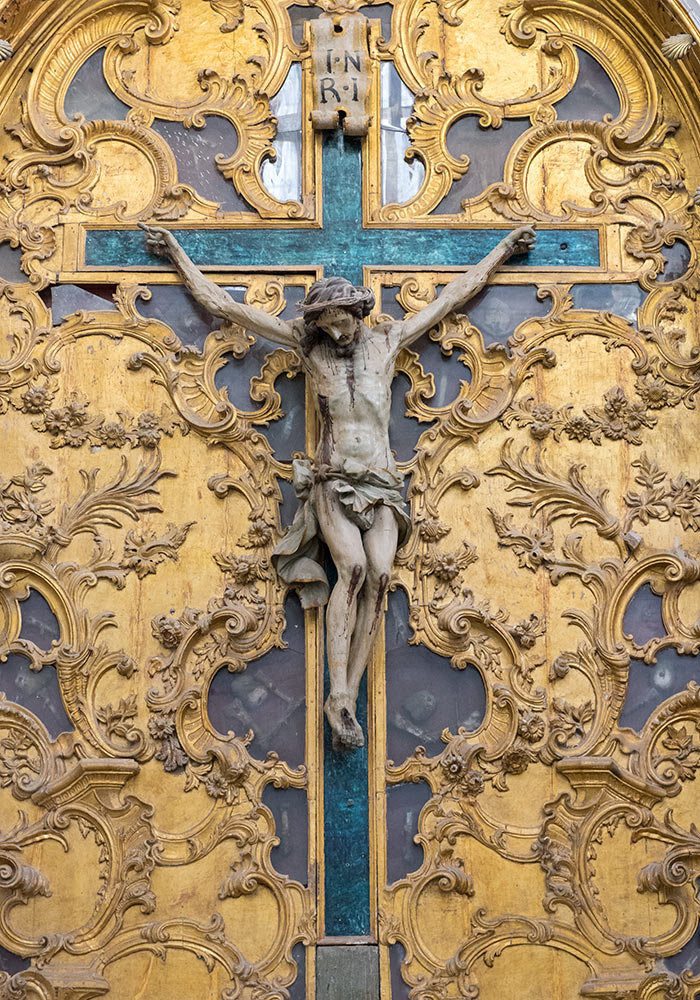
Crucifix in the church of the Purgatorio (San Lorenzo), Agrigento. Relics behind the glass.
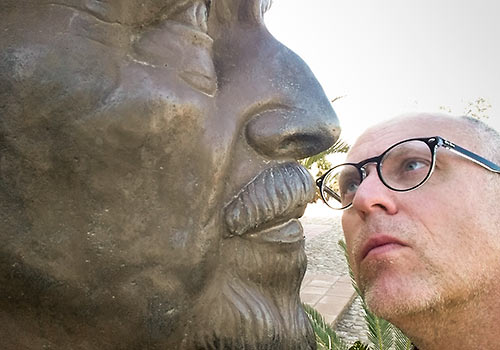
The editor Per-Erik Skramstad trying to make contact with Luigi Pirandello.
Photo: Per-Erik Skramstad / Wonders of Sicily
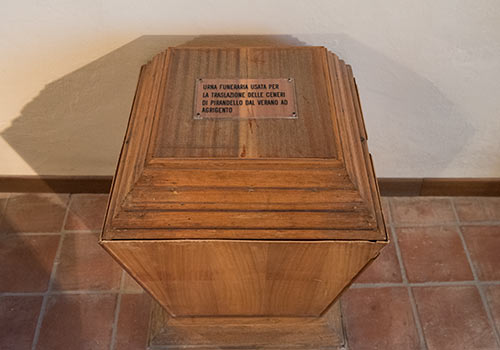
Funerary urn used for transfering Pirandello's ashes from Verano to Agrigento
Photo: Per-Erik Skramstad / Wonders of Sicily
The distance between Agrigento and some other cities in Sicily
Agrigento-Palermo 131 km
Agrigento-Cefalù 134 km
Agrigento-Siracusa 217 km
Agrigento-Noto 242 km
Agrigento-Taormina 219 km
Agrigento-Catania 167 km
Agrigento-Trapani 130 km
Agrigento Festival (1957)
Agrigento Timeline
- 580 BC: Agrigento is founded as a colony of Gela and came to prominence under the tyrants Phalaris and Theron
- 480 BC: The artificial lake Kolymbetra was dug by Theron's Carthaginian prisoners taken at Himera
- 406 BC: The Carthaginians capture the city after an eight-month siege and burn the city
- 340 BC: Agrigento was rebuilt by Timoleon, who defeated the Carthaginians
- 261 BC: The Romans take the city
- 255 BC: Carthaginians recapture the city
- 218-201 BC Agrigento suffered badly during the Second Punic War when both Rome and Carthage fought to control it.
- 210 BC: The Romans take the city again, this time Agrigentum remained in their possession until the fall of the empire. Agrigentum remained a largely Greek-speaking community for centuries after the Roman conquest.
- After the fall of the Western Roman Empire, the city successively passed into the hands of the Vandalic Kingdom, the Ostrogothic Kingdom of Italy and then the Byzantine Empire. During this period the inhabitants of Agrigentum largely abandoned the lower parts of the city and moved to the former acropolis, at the top of the hill (this was probably related to the destructive coastal raids of the Saracens).
- Late 6th century: The Temple of Concord is converted into a church by the bishop of Agrigento, San Gregorio delle Rape (St Gregory of the Turnips)
- 828 AD: The Arabs take the city and make the trade flourish by cultivating cotton, sugar-cane and mulberries for the silk industry (they even had to make a new harbour, at Porto Empedocles)
- 1087: The Normans take Agrigento after a 116 days siege
- 1867: Luigi Pirandello was born
- 1885: The author Guy de Maupassant travels in Italy, Sicily included. After returning to Paris, Maupassant began publishing his Sicilian travel memoirs in installments in Le Figaro and Gil Blas
- 1927: Mussolini orders that the city should be called Agrigento, not Girgenti
- 1936: Luigi Pirandello dies
Sources: Wikipedia, The Blue Guide Sicily
Sicilian Sites on UNESCO's World Heritage List
- Agrigento: Archaeological Area of Agrigento (UNESCO)
- Aeolian Islands: Isole Eolie. The group consists of seven islands (Lipari, Vulcano, Salina, Stromboli, Filicudi, Alicudi and Panarea) and five small islets (Basiluzzo, Dattilo, Lisca Nera, Bottaro and Lisca Bianca) in the vicinity of Panarea. (UNESCO)
- Caltagirone (UNESCO)
- Catania (UNESCO)
- Cefalù Cathedral
- Militello Val di Catania (UNESCO)
- Modica (UNESCO)
- Monreale Cathedral
- Mount Etna (UNESCO)
- Noto (UNESCO)
- Palermo: Palazzo dei Normanni (The Norman Palace)
- Palermo: Cappella Palatina (The Palatine Chapel in the Norman Palace)
- Palermo: Church of San Giovanni degli Eremiti
- Palermo: Church of Santa Maria dell'Ammiraglio (also known as the Martorana)
- Palermo: Church of San Cataldo
- Palermo: Cathedral of Palermo
- Palermo: The Zisa Palace (La Zisa)
- Palermo: The Cuba Palace (La Cuba)
- Palazzolo Acreide (UNESCO)
- Ragusa (UNESCO)
- Scicli (UNESCO)
- Syracuse and the Rocky Necropolis of Pantalica (UNESCO)
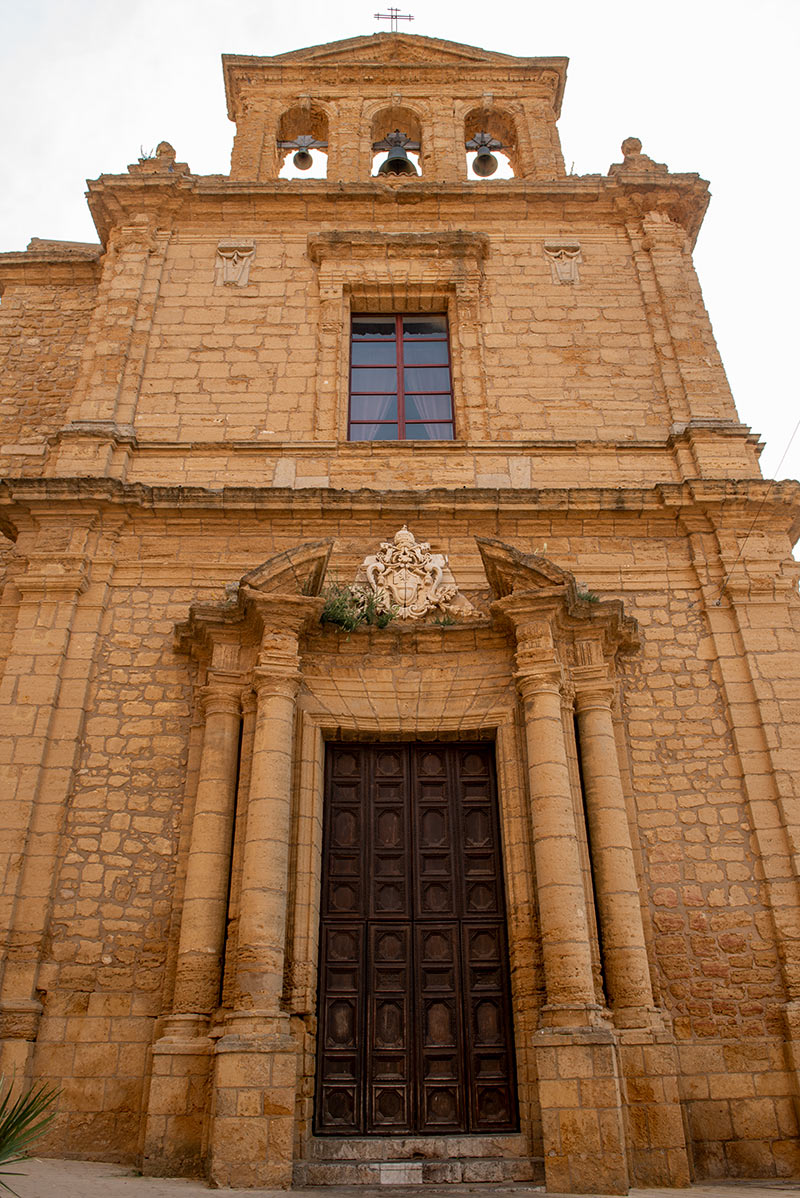
Chiesa di San Pietro.
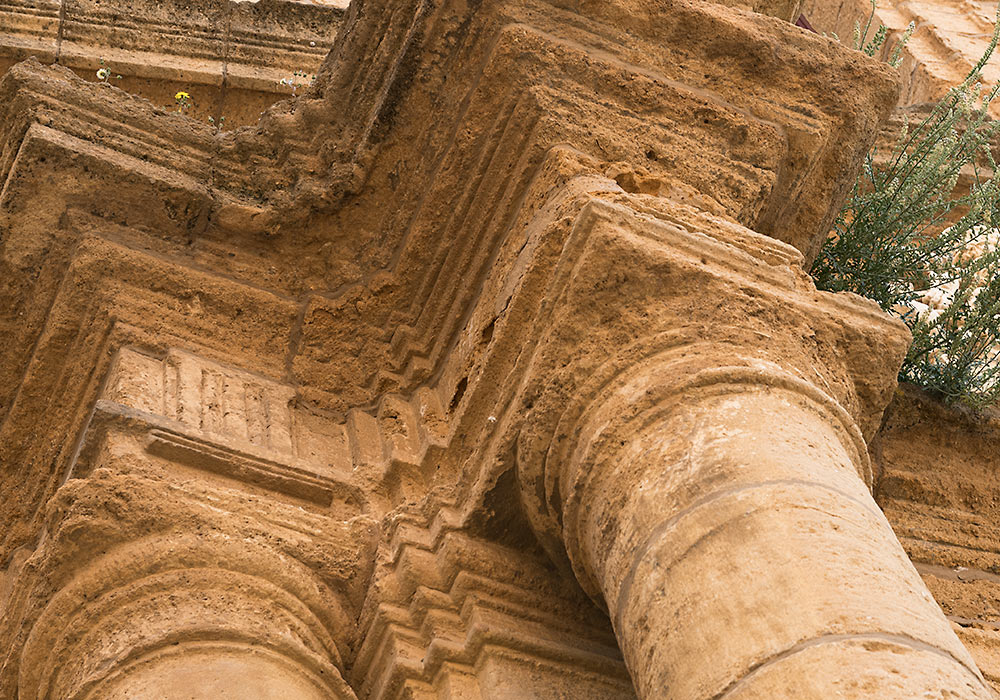
Detail of Chiesa di S. Pietro (18th century). The beauty of decay.
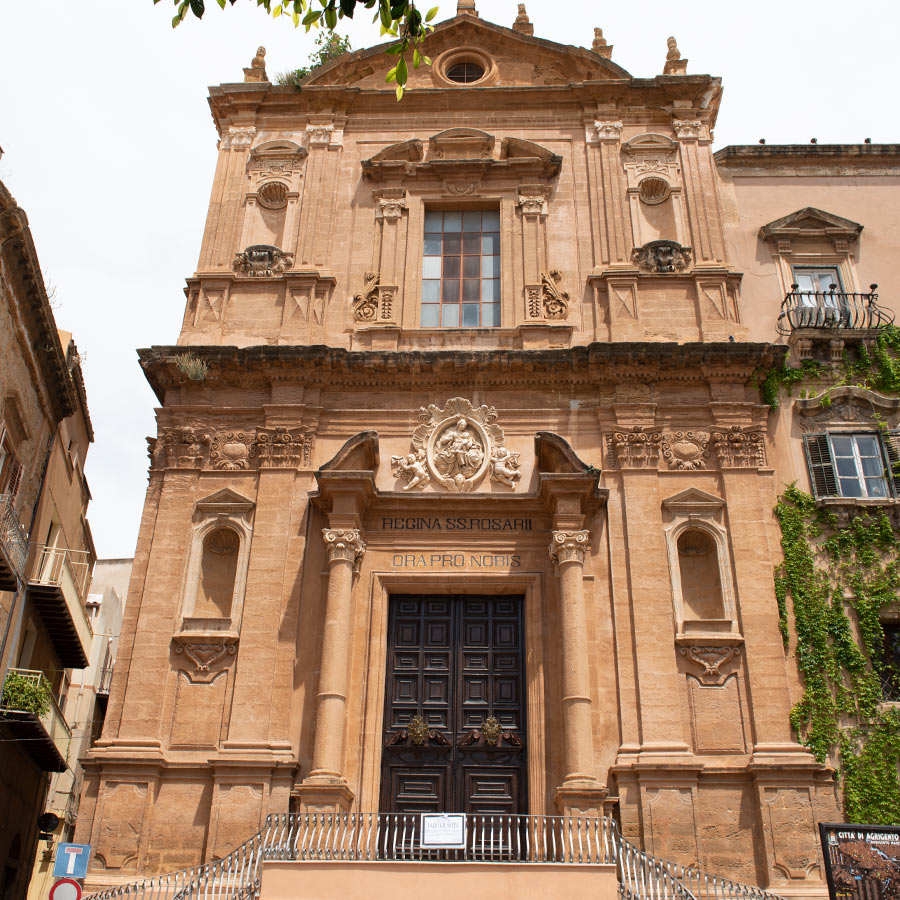
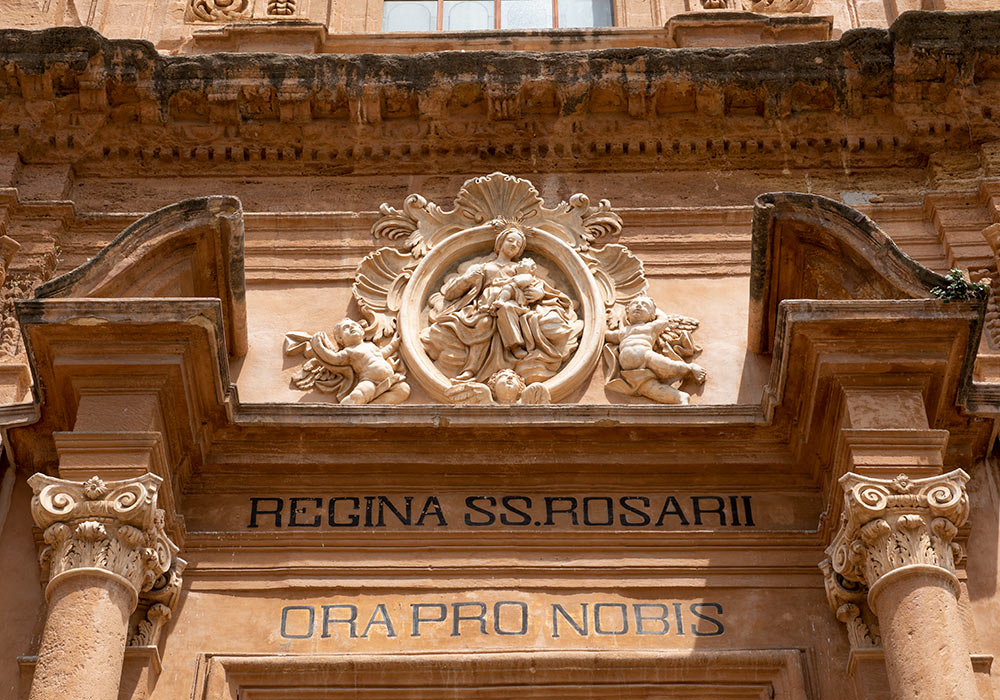
Sicily: Some geographical names in Italian, Sicilian, English, Latin and Greek
- Agrigento (Sicilian: Girgenti, Ancient Greek: Akragas (Ἀκράγας), Latin: Agrigentum, Arabic: Kirkent or Jirjent)
- Agrigentum, Latin for Agrigento
- Akragas (Ἀκράγας), Ancient Greek for Agrigento
- Àsaru, Sicilian for Assoro
- Assorus, Latin for Assoro
- Assoros, Greek for Assoro
- Baarìa, Sicilian for Bagheria (also the title of a film by Giuseppe Tornatore)
- Balarm, Arabic for Palermo
- Butirah, Arabic for Butera (one of the largest cities in Arab Sicily)
- Càccamu Sicilian for Caccamo
- Castrogiovanni (until 1926 Enna was known as Castrogiovanni)
- Castrugiuvanni, Sicilian for Enna
- Cefalù (Sicilian: Cifalù, Greek: Κεφαλοίδιον, Diod., Strabo, or Κεφαλοιδὶς, Ptol.; Latin: Cephaloedium, or Cephaloedis)
- Cephaloedium or Cephaloedis, Latin for Cefalù
- Cifalù, Sicilian for Cefalù
- Egesta, Greek for Segesta
- Enna (Sicilian: Castrugiuvanni; Greek: Ἔννα; Latin: Henna and less frequently Haenna). Until 1926 the town was known as Castrogiovanni.
- Girgenti, Sicilian for Agrigento
- Henna / Haenna, Latin for Enna
- Hyspicae Fundus, Latin for Ispica
- Ispica (Sicilian: Spaccafurnu, Latin: Hyspicae Fundus)
- Jirjent, Arabic for Agrigento (also: Kirkent)
- Kefaloidion or Kefaloidis (Κεφαλοίδιον / Κεφαλοιδὶς), Greek for Cefalù
- Kentoripa, ancient Greek for Centuripe
- Kirkent, Arabic for Agrigento (also: Jirjent)
- Noto (Sicilian: Notu; Latin: Netum)
- Notu, Sicilian for Noto
- Netum, Latin for Noto
- Palermo (Sicilian: Palermu, Latin: Panormus, from Greek: Πάνορμος, Panormos, Arabic: Balarm, Phoenician: Ziz)
- Palermu, Sicilian for Palermo
- Panormos (Πάνορμος), Greek for Palermo
- Panormus, Latin for Palermo (from Greek: Πάνορμος, Panormos)
- Sarausa, Sicilian for Siracusa
- Selinous, Greek for Selinunte
- Selinus, Latin for Selinunte
- Siggésta, Sicilian for Segesta
- Siracusa (English: Syracuse, Latin: Syracusæ, Ancient Greek: Syrakousai (Συράκουσαι), Medieval Greek: Συρακοῦσαι, Sicilian: Sarausa)
- Spaccafurnu, Sicilian for Ispica
- Syracuse, English for Siracusa
- Syracusæ, Latin for Siracusa
- Syrakousai (Συράκουσαι), Ancient Greek for Siracusa
- Syrakousai (Συρακοῦσαι), Medieval Greek for Siracusa
- Taormina (Sicilian: Taurmina, Greek: Ταυρομένιον Tauromenion, Latin: Tauromenium)
- Taurmina, Sicilian for Taormina
- Tauromenion (Ταυρομένιον), Greek for Taormina
- Tauromenium, Latin for Taormina
- Terranova is the old name for Gela (the fifth largest town in Sicily)
- Ziz, Phoenician for Palermo
Sources
- The Encyclopaedia Britannica : a dictionary of arts, sciences, literature and general information by Chisholm, Hugh, 1866- Published 1910-1922
- The Blue Guide Sicily

